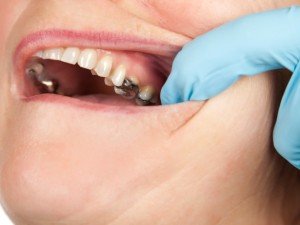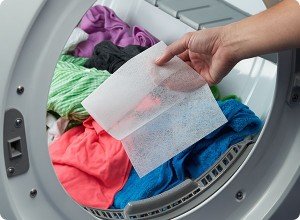Asphalt sealer poses toxic risk, especially for children
6 min read
(MSNBC) When you think of pollution, you might picture an industrial center like Camden, N.J., or Jersey City. But new research shows that when it comes to a potent class of cancer-causing toxic chemicals, many American parking lots are a lot worse.
New studies paint an increasingly alarming picture – particularly for young children – about how these chemicals are being spread across big swaths of American cities and suburbs by what may seem an unlikely source – a type of asphalt sealer. These sealants are derived from an industrial waste, coal tar.
Four new studies (links are at the end of this article) announced this week further implicate coal tar-based asphalt sealants as likely health risks. The creosote-like material typically is sprayed onto parking lots and driveways in an effort to preserve the asphalt. It also gives the pavement a dark black coloring that many people find attractive.
Coal tar is a byproduct of the steelmaking industry. In 1992, the U.S. Environmental Protection Agency declared that it would not be classified as a hazardous waste, even though it met the characteristics of one, because it could be recycled for uses that include coating asphalt. That meant steel mills didn’t have to pay for costly landfilling or incineration of the waste.
Only in recent years have scientists discovered the ill effects of this practice.
Coal tar sealants are used most heavily in the eastern United States, but were applied in all 50 states until Washington state banned the products last year. More than a dozen local governments, including Washington, D.C., and Austin, Texas, also have banned the coal tar sealants in favor of the other major type of sealant, which is asphalt-based.
Asphalt-based sealants contain about 1/1000th the concentration of the cancer-causing chemicals that coal tar-based products do. Home Depot and Lowe’s stores have dropped the coal tar sealants from their product lines, but still some 85 million gallons of the coal tar-based sealants are applied annually in the United States.
The new research, published in peer-reviewed science journals, focuses on a class of chemicals found in coal tar and known as “polycyclic aromatic hydrocarbons,” or PAHs. Previously, researchers believed that people’s exposure to PAHs came primarily through food, which contains trace amounts produced primarily from smoking food or cooking it at high temperatures in practices such as grilling, roasting, and frying. PAHS are produced when any organic matter burns.
The new research shows:
- It appears that children – especially those from 3 to 5 years old – living by coal tar-sealed parking lots and driveways are getting a bigger dose of PAHs from house dust than from their food. The kids who put their hands in their mouth most often are likely receiving 9 ½ times more exposure through house dust than through food, according to research led by E. Spencer Williams, a Baylor University human health risk assessment expert. That’s just from the house dust. When the kids are outside in the yard or playing on coal tar-sealed pavement, they likely are picking up much larger doses.
- While researchers previously theorized that airborne PAHs come mostly from power plants, factories and cars’ and trucks’ tailpipe emissions, U.S. Geological Survey researchers measured large amounts vaporizing into the air off coal tar-sealed parking lots. The concentrations coming off parking lots in suburban Austin, where the researchers are based, were higher than in centers of heavy industry, including Jersey City and Camden, N.J.; Chicago; London and Manchester, England; and Guangzhou, China. The Austin parking lots tested were three to eight years old. Much more off-gassing occurs in the first few years after the sealants are applied, researchers said.
- Concentrations measured four feet above the coal tar-sealed lots in some cases exceeded health-protection guidelines recommended by a European Union science panel to protect against cancer. The United States has no similar guidelines.
- Extrapolating from the 85 million gallons of coal tar sealants laid down annually and the out-gassing rates measured in Austin, Geological Survey researchers calculated that nationwide, more PAHs are getting into the air from coal tar-sealed parking lots, driveways and playgrounds than from all the auto and truck exhaust.
“That’s a lot,” said Barbara Mahler, a USGS scientist involved in the research.
Researchers previously had shown that coal tar-sealed parking lots were shedding tiny bits of the material, which was washed by rain into nearby waterways – killing, sickening and maiming aquatic creatures such as salamanders, minnows and, importantly, bugs at the base of the food chain. The chemicals kill tadpoles, cause tumors on fish, stunt growth of aquatic creatures and reduce the number of species able to live in a waterway.
As a result of being washed into waterways by stormwater, these chemicals’ concentrations have been rising over the last two decades, even as levels of most contaminants are headed down, Geological Survey researchers showed.
The chemicals are getting into the house dust, researchers think, when small bits are eroded off pavement and tracked into nearby homes.
Scientists also had previously demonstrated that toxic constituents of coal tar were showing up in the dust of homes adjacent to parking lots and driveways, raising questions about health effects on children in those homes, especially toddlers who frequently put their hands in their mouths. Coal tar is known to cause cancer in humans, as well as genetic mutations in lab animals.
One of the new studies helps quantify that risk. Kids who are average in terms of how often they put their hands into their mouths are getting 2 ½ times as many PAHs from house dust as from food, while those in the 95th percentile of hand-to-mouth behavior – they do it more than 94 percent of other kids – get 9 ½ times as much from the dust.
Researchers still would like to know how much of a toxic dose those same kids are getting when they play outside in yards next to coal tar-sealed asphalt, or on the asphalt itself. The level of cancer-causing chemicals in the dust on the asphalt itself has been measured at about 37 times the levels found in house dust.
“Those concentrations are a good bit higher and this study doesn’t include that at all,” said Williams, the Baylor researcher. “That may be important because just one little fingerful could be a relevant dose,” meaning one that worries health experts.
While researchers have known about contamination of water and dust, the findings about air pollution are new. Significant amounts of PAHs continue to vaporize off coal tar-sealed lots even years after the sealant is put down.
“When we look at a seal-coated parking lots, in any direction we look we see these really strongly elevated concentrations,” said Peter Van Metre, a U.S. Geological Survey scientist based in Austin. Of the dust on the coal tar-sealed pavement, he said: “It would just take a tiny amount of that to be a large enough dose for it to be significant.”
Companies that sell and use the coal tar sealants have previously disputed the growing body of evidence of the coal tar sealants’ danger being amassed by scientists from the Geological Survey, the University of New Hampshire, Baylor and other institutions.
Repeated attempts this week to reach an industry representative, Anne LeHuray, executive director of the Pavement Coatings Technology Council, for comment on the new studies were unsuccessful. In an email on Thursday, LeHuray said she was tied up at a meeting of the pavement council in Memphis.
Generally, the pavement council has attacked previous coal tar research on technical grounds.
Read previous articles on coal tar sealants:
The pavement council has fought bans – sometimes successfully – when they have been proposed by local and state governments. In addition to the local governments that have forbidden use of the coal tar sealants, some governments have placed restrictions on their use, including the state of Minnesota and the California Department of Transportation. Restrictions also are in effect in more than 40 Illinois municipalities.
U.S. Rep. Lloyd Doggett, a Democratic congressman from the Austin area, has previously filed legislation calling for a nationwide ban on coal tar sealants. He plans to refile the legislation, a Doggett spokeswoman said, but is currently embroiled in a redistricting fight.
Tom Ennis, an Austin city official who helped get coal tar sealants banned there, has now launched a campaign to support a nationwide ban.
“You’re looking at a big urban air quality” problem, Ennis said. “It’s completely unacceptable and something needs to be done.”
The studies announced this week appeared in the science journals Environmental Science and Technology, Chemosphere, Atmospheric Environment, and Environmental Pollution.






